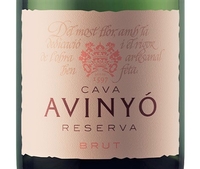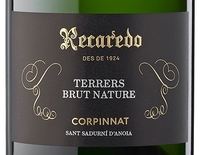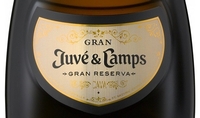Cava’s flavor profile and versatility speak for themselves. Cava is mainly a blend of the indigenous varieties Macabeo, Xarel-lo, and Parellada. Xarel-lo has character, notable flavor, and the most significant potential for quality; Macabeo (a.k.a. Viura) holds good acidity; and Parellada tends to be neutral—though it can bring delicacy and finesse to a wine, particularly when grown at high altitudes.
The first traditional method (where secondary fermentation of the wine occurs inside the bottle) of sparkling wine made in Spain was crafted in 1872 by Josep Raventós in Catalonia after spending some time in France’s Champagne region. Raventós is considered the founder of the Cava industry. The Spanish bubbly was called Champaña in Spain until French regulations were put into place to limit the use of the word Champagne to only those wines produced in the Champagne region of France. So, the Spanish re-named their sparkling wine after the caves or cellars where the sparkling wine was kept for aging. Thus came the name Cava. In 1972, to protect the designation of origin of Cava, the government set up the Regulatory Council of Sparkling Wines. It reserved the term “Cava” for Spanish sparkling wine.
Cava was established as an official Denominación de Origen (D.O.) in 1986, shortly after Spain joined the European Union. The D.O. was created to protect all Spanish sparkling wine rather than one specific region. However, this approach, while well-intentioned, had no sub-regions and no category system to recognize quality level, thus lacking the ability to provide consumers the guarantee of quality and origin. Unfortunately, as a result, Cava’s reputation has been weighed down over the years by loose regulations and production of mass quantities. Few consumers know how fine Cava can be, or how reflective it can be of its place of origin. Many see it as merely a cheap alternative to Champagne.
Cava has always deserved better, and there are indications that Cava’s fate is changing largely due to several high-end producers seeking to distinguish themselves outside the Cava D.O. over the last decade. They believed they could more effectively market the prestige and quality of their sparkling wine brands by distancing themselves from Cava’s mass-produced image. These estates, including Gramona, Llopart, and Recaredo, to name a few, broke ties and left the D.O. to bottle their wines under the brand name Corpinnat (roughly meaning “heart of Penedès” in Latin). The brand Corpinnat was presented in April 2018 as a new EU-registered, private certification that champions terroir in Penedès with stricter quality standards than those set by the D.O. Cava.
Their departure has led to the D.O. Cava announcing sweeping reforms that began this year prioritizing quality, farming, and terroir specificity. The result is a new system of Cava classification, with two separate categories: Cava de Guarda, aged for a minimum of nine months, and Cava de Guarda Superior – with Reserva a minimum of 18 months on lees and Gran Reserva at least 30 months. There’s also a top tier for single vineyard sites: Cava de Paraje Calificado, which must be aged for at least 36 months, bringing it into line with vintage Champagne. All vines must be 100 percent organic by 2025. There is also a ceiling on harvest production levels: yields may only be a maximum of 4.9 tons per acre, and all bottles must be labeled with an indication of the vintage. Finally, for the Guarda Superior accreditation, the vineyard will have to be entirely hand-harvested; only vineyards established over ten years ago can apply.
The D.O. also approved the use of subzones on the label, which are located across four major production zones (while 95 percent of Cava production comes from Catalonia, Cava may also be produced in Rioja, Extremadura, and Valencia). Wineries that estate-produce and bottle all of their Cava (rather than purchasing base wine from another producer, as is common for many large Cava wineries) may also use the term “Integral Producer” on their labels.
While the different "visions" for the future across producers may seem complicated and confusing, it is actually an outcome of winemakers producing outstanding wines and determined to push for higher quality standards and greater consumer awareness beyond the value proposition. Cava now has some of the most demanding regulations in the world of sparkling wine. These changes will hopefully heal Cava’s maligned reputation and bring visibility to the fact that Cava is one of the finest and most refined traditional method sparkling wines in the world. So, reacquaint your tastebuds this holiday season with Cava and whatever you need sparkling wine for; cross it off your frantic holiday to-do list because Cava’s got you covered.
Three Cavas to Try This Holiday Season:
 Avinyó Cava Brut Reserva 2019 ($20, De Maison Selections): This blend of Macabeo 60%, Xarel-lo 25%, Parellada 15% is an appealing mix of complexity with mouthwatering minerality. It has a yellow-gold core, with a gently invigorating mousse and ripe aromas of green apple, pear, salted lemon, raw pastry dough, chopped nuts, anise, and wet stones. There is lots of purity of fruit and a pleasing palate-coating texture, and it thrills with freshness. This could easily be mistaken for high-end Champagne. 91
Avinyó Cava Brut Reserva 2019 ($20, De Maison Selections): This blend of Macabeo 60%, Xarel-lo 25%, Parellada 15% is an appealing mix of complexity with mouthwatering minerality. It has a yellow-gold core, with a gently invigorating mousse and ripe aromas of green apple, pear, salted lemon, raw pastry dough, chopped nuts, anise, and wet stones. There is lots of purity of fruit and a pleasing palate-coating texture, and it thrills with freshness. This could easily be mistaken for high-end Champagne. 91
 Recaredo "Terrers" Brut Nature Cava 2018 ($40, Rosenthal Wine Merchant): Recaredo is one of the leading producers of Cava, now under the collective brand Corpinnat (in the past, in the Cava D.O.). All their sparkling wines are all Brut Nature and aged with natural cork stoppers, and each bottle is manually disgorged. Recaredo’s flagship Cava, “Terrers” is a blend of 65% Xarel-lo, 18% Macabeu and 17% Parellada. Five solid years on the lees infuse the wine with extravagant depth, yet no excessive yeastiness can be found. This is bone dry with penetrating minerality, showcasing the signature style of Recaredo. Its aromatic complexity and freshness are remarkable, with notes of ripe white fruit and citrus peel, along with delicate flavors of toasted baguette and aromatic herbs. 94
Recaredo "Terrers" Brut Nature Cava 2018 ($40, Rosenthal Wine Merchant): Recaredo is one of the leading producers of Cava, now under the collective brand Corpinnat (in the past, in the Cava D.O.). All their sparkling wines are all Brut Nature and aged with natural cork stoppers, and each bottle is manually disgorged. Recaredo’s flagship Cava, “Terrers” is a blend of 65% Xarel-lo, 18% Macabeu and 17% Parellada. Five solid years on the lees infuse the wine with extravagant depth, yet no excessive yeastiness can be found. This is bone dry with penetrating minerality, showcasing the signature style of Recaredo. Its aromatic complexity and freshness are remarkable, with notes of ripe white fruit and citrus peel, along with delicate flavors of toasted baguette and aromatic herbs. 94
 Juve y Camps, Gran Juvé, Gran Reserva 2015 ($65, Winebow, Inc.): The Gran Juvé 2015 Cava is only made in exceptional years from the finest plots of grapes. This blend of Chardonnay, Xarel-lo, Macabeo, and Parellada was aged on the lees in bottle for 42 months before disgorgement. The palate is rich with notes of ripe soft nectarine, white cherry, citrus peel, and hints of soft buttery brioche, honey, and sea salt. It holds a consistent effervescence of bubbles, balanced acidity, and a persistent and glorious finish that returns to the fruit flavors. 92
Juve y Camps, Gran Juvé, Gran Reserva 2015 ($65, Winebow, Inc.): The Gran Juvé 2015 Cava is only made in exceptional years from the finest plots of grapes. This blend of Chardonnay, Xarel-lo, Macabeo, and Parellada was aged on the lees in bottle for 42 months before disgorgement. The palate is rich with notes of ripe soft nectarine, white cherry, citrus peel, and hints of soft buttery brioche, honey, and sea salt. It holds a consistent effervescence of bubbles, balanced acidity, and a persistent and glorious finish that returns to the fruit flavors. 92
